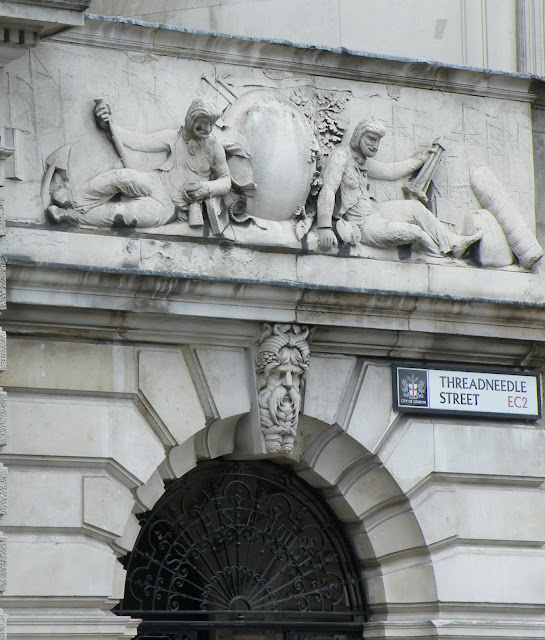 The middle panel on the NatWest facade is the last carved by John Hancock. The matching two bays on the right were added by Gibson in 1878, by which time Hancock had died at the tragically early age of 46.
The middle panel on the NatWest facade is the last carved by John Hancock. The matching two bays on the right were added by Gibson in 1878, by which time Hancock had died at the tragically early age of 46.Hancock's last panel shows the Angel of the Merchant Navy standing on a dock as a ship comes in. As with many maritime scenes portrayed by artists who never went near the sea, it make absolutely no sense. At the bow, a bearded matelot holds a painter attached precariously to a ring on a post. So the anchor that the burly sailor with the sideburns is throwing overboard at the stern would presumably be completely unnecessary.
Another sailor in the bows is lowering a jib and gathering it in, but the halyard is not connected to the peak of the sail.
That enormous spar sticking up behind the Angel is another mystery. A sail is hung from it, so it should be a yard, but there does not seem to be any mast for it to hang from.
And - what on earth is that stuff draped over the top of the poor girl's head? Seaweed?
























